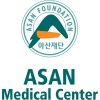
Efficacy and Safety Study of Recombinant Human Arginase 1 in Patients With Relapsed or Refractory...
Acute Myeloid LeukemiaTo evaluate the efficacy of PEG-BCT-100 in patients with relapsed or refractory acute myeloid leukemia (AML) in terms of remission rate.

Study of Sensitization of Non-M3 AML Blasts to ATRA by Epigenetic Treatment With Tranylcypromine...
Acute Myeloid LeukemiaMyelodysplastic SyndromeThe objective of the phase I part of the trial is the determination of the maximum tolerated dose (MTD) of TCP (Tranylcypromine) in combination with fixed-dose ATRA (all-trans-retinoic acid) and with fixed-dose AraC (Cytarabine) and to derive the recommended phase II dose (RP2D) in patients with non-APL AML or MDS for whom no standard treatment is available or who failed azanucleoside treatment. The objective of the phase II part of the trial is a first evaluation of the efficacy of TCP at the RP2D in combination with fixed-dose ATRA and with fixed-dose AraC as basis for further investigations of TCP

Evaluation of the Safety, Tolerability, Pharmacokinetics, and Pharmacodynamics of PHI 101 for the...
Relapsed or Refractory Acute Myeloid LeukemiaThe purpose of this study is to find out the maximum tolerable dose and safety of PHI-101, novel FLT3 inhibitor in the treatment of relapsed or refractory AML for patients who have received standard therapy or cannot tolerate standard therapy, and/or for whom no standard therapy exists. There will be two parts to the study, which we will call Phase Ia and Phase Ib. Phase Ia is called the dose escalation. Approximately 20 to 24 patients are planned to be enrolled into Phase Ia. Phase 1a is conducted to determine the best dose and schedule of dosing of PHI-101 to be used in Phase 1b. There will be 5 different dose levels of PHI-101 given to patients in Phase Ia. Phase Ib is called the dose expansion. Approximately 14-34 patients (approximately 14-17 patients in each of the 2 cohorts planned) of each cohort are planned in Phase Ib based on study design. Phase Ib is also being conducted to assess anti-leukemia response, changes in transfusion requirements, and safety of PHI-101 at the dose level identified during Phase Ia.

CNDO-109-AANK for AML in First Complete Remission (CR1)
Acute Myeloid LeukemiaThis is a multi-center, open-label, non-controlled, non-randomized dose-escalating Phase 1 clinical study designed to examine the safety of infusing escalating doses of CNDO-109-Activated Allogeneic Natural Killer Cells-(from a first or second degree relative), after a preparatory chemotherapy regimen, in adult patients with acute myeloid leukemia (AML) who are in their first complete remission at the time of enrollment, are not candidates for stem cell transplant, and are considered to be at high risk for recurrence.

HLA-mismatched Microtransplantation for High Risk Acute Myeloid Leukemia
Acute Myeloid LeukemiaTo compare the antitumor efficacy and toxicity of Idarubicin and cytarabine in combination with or not with infusions of granulocyte colony-stimulating factor-mobilized HLA-mismatched donor peripheral blood stem cells in patients with newly diagnosed high-risk acute myeloid leukemia (AML).

Safety and Immunogenicity of Recombinant WT1 Antigen-Specific Cancer Immunotherapeutic Combined...
Acute Myelogenous LeukemiaMyeloid Leukemia in Remission1 moreThe purpose of this study is to evaluate the safety and the efficacy of combined treatment strategy of WT1ASCI, infusion of ex vivo regulatory T cells depleted T lymphocytes and in vivo regulatory T cells depletion as post-consolidation therapy in patients with WT1-positive Acute Myeloid Leukemia. The study will also evaluate the clinical activity and immune response of this approach in bad risk patients in CR1 and all patients in CR2 or CR3, non eligible for an allogeneic Hematopoietic Stem Cell Transplantation

Autologous Hematopoietic Cell Transplantation for Core-binding Factor Acute Myeloid Leukemia
LeukemiaMyeloidPrimary study objective is the evaluation of efficacy of autologous hematopoietic cell transplantation (HCT) with core-binding factor (CBF) positive acute myeloid leukemia (AML) in the first CR (CR1) in terms of relapse incidence (cumulative incidence of relapse, CIR) and disease-free survival (DFS). Secondary study objectives are the engraftment rate / time to engraftment, transplantation-related mortality (TRM) rate, event-free survival (EFS) rate, and Overall survival (OS).

Myeloablative Hematopoietic Progenitor Cell Transplantation (HPCT) for Pediatric Malignancies
LeukemiaMyelogenous10 moreThe purpose of this study is to show that myeloablative hematopoietic progenitor cell transplantation (HPCT) continues to offer acceptable disease-free survival for select patients requiring HPCT.

Chemotherapy and Biological Therapy With or Without Bone Marrow or Peripheral Stem Cell Transplant...
LeukemiaRATIONALE: Giving chemotherapy, such as hydroxyurea, cytarabine, idarubicin, and etoposide before a donor bone marrow transplant or stem cell transplant helps stop the growth of cancer cells. It also helps stop the patient's immune system from rejecting the donor's stem cells. Interferon alfa may interfere with the growth of cancer cells and slow the growth of cancer. When the healthy stem cells from a donor are infused into the patient they may help the patient's bone marrow make stem cells, red blood cells, white blood cells, and platelets. It is not yet known whether chemotherapy is more effective with or without interferon alfa and/or bone marrow or stem cell transplant in treating patients with chronic myelogenous leukemia. PURPOSE: This randomized phase III trial is studying chemotherapy and biological therapy to see how well it works compared with chemotherapy, biological therapy, and donor bone marrow transplant or autologous stem cell transplant in treating patients with chronic phase chronic myelogenous leukemia.

Study of DAC Combined With HAAG Regimen in Newly Diagnosed AML Patients Older Than 60
Acute Myeloid LeukemiaInduction ChemotherapyThe purpose of this study is to evaluate the safety and efficacy of DAC combined with HAAG regimen in the induction treatment of newly diagnosed AML patients older than 60 years.
